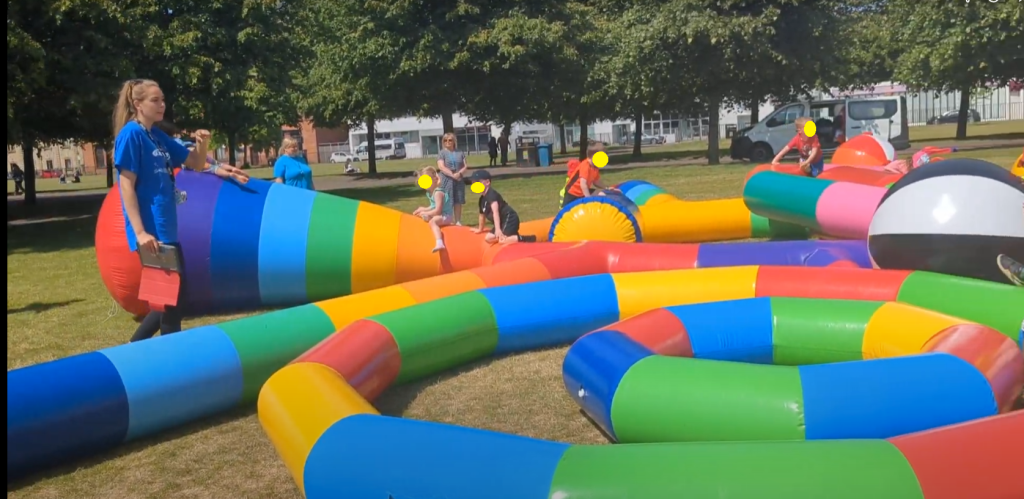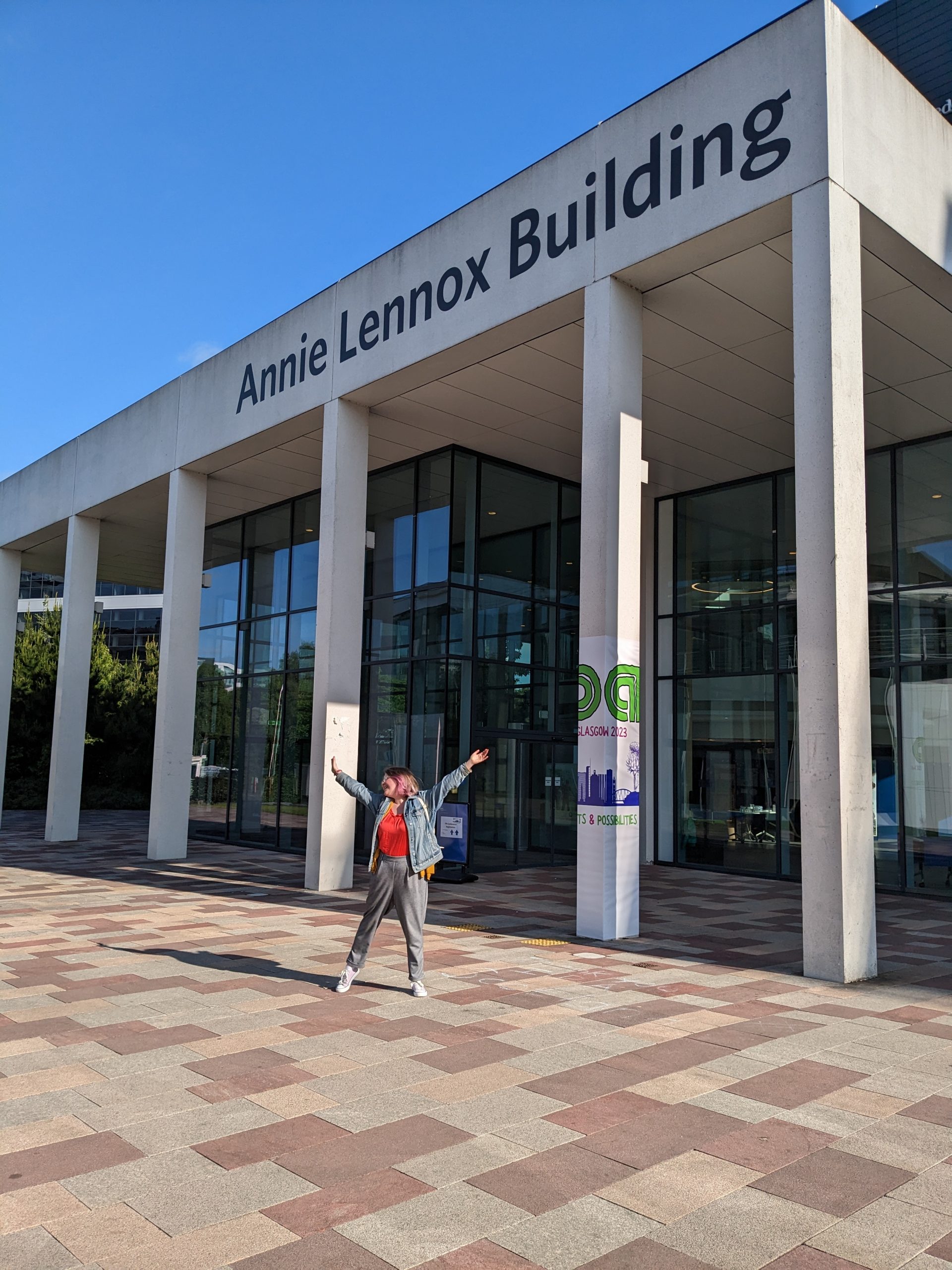What a week! The International Play Association Conference descended on Glasgow and I for one had an amazing time.
After a week off to recuperate, I thought it would be good to share some reflections on everything I got up to during the conference.
Monday
I got the train through to Glasgow from Edinburgh and collected my badge. I added my pronouns, and that I speak English and Gaelic. Sadly, I didn’t find anyone else with Gaelic at the conference but I always Beò an Dòchas (live in hope!).
Then I head up to the first floor to set up the Litter Pick & Play Exhibition. The exhibition included case studies from IPA Branches from India, Nigeria, and the USA. As well as a wonderful sculpture made by the children at St Mirin Out of School Care. You can see more about the exhibition here: https://bit.ly/3oJzKzd
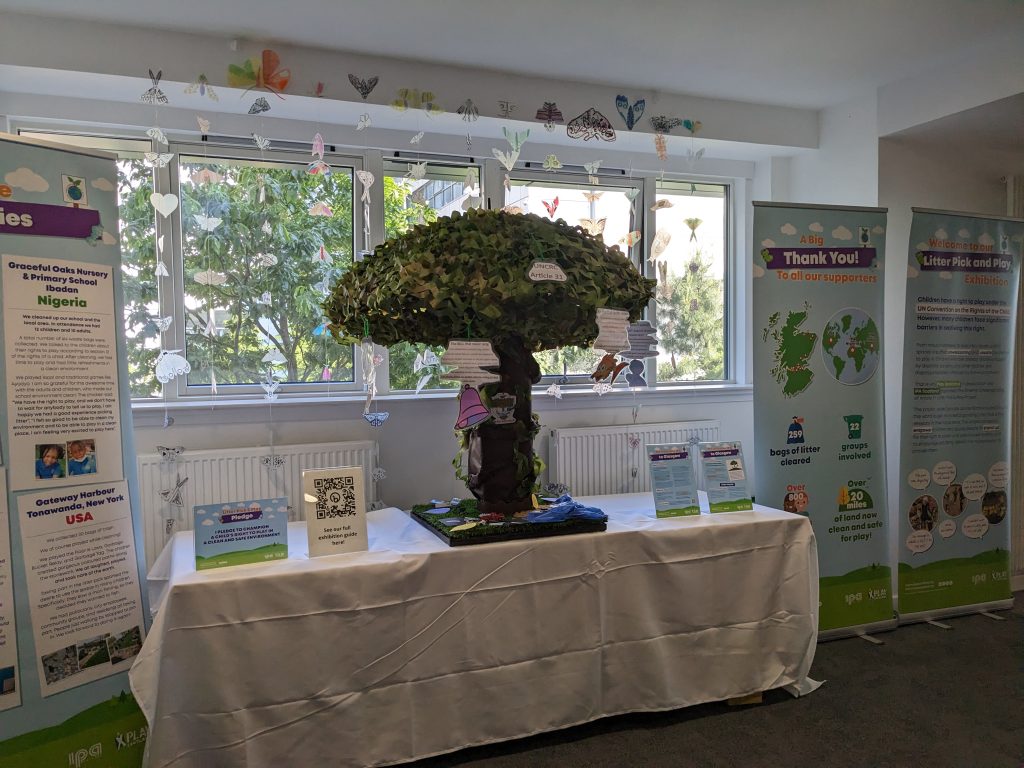
Tuesday
I started by heading to the main plenary session where Tam Baillie, former Scottish Commissioner for Children and Young People, welcomed us all to Glasgow. Tam also included some Gaelic in his introduction which was wonderful – Taing a’ Tham!
I had to sneak out a little early to meet the children from St Mirin’s Out of School Care. We dropped off our stuff, they changed into their “Play Expert” t-shirts. Then we went to the park for some play (can’t have a play conference without it!).
Then I hosted the Litter Pick and Play Lantern Room Session. The theme was A Child’s Right to Play is a Child’s Right to Space.
The children did an excellent job sharing their project and telling us about their sculpture.
We also heard from:
- Kirti Zala from IPA India who organised a Litter Pick and Play project there
- Adefunke Ekine who organised IPA Nigeria’s project
- and Deb Lawrence who organised IPA USA’s project.
Then all together we made some art and drawings to do with a right to play in clean and safe spaces.
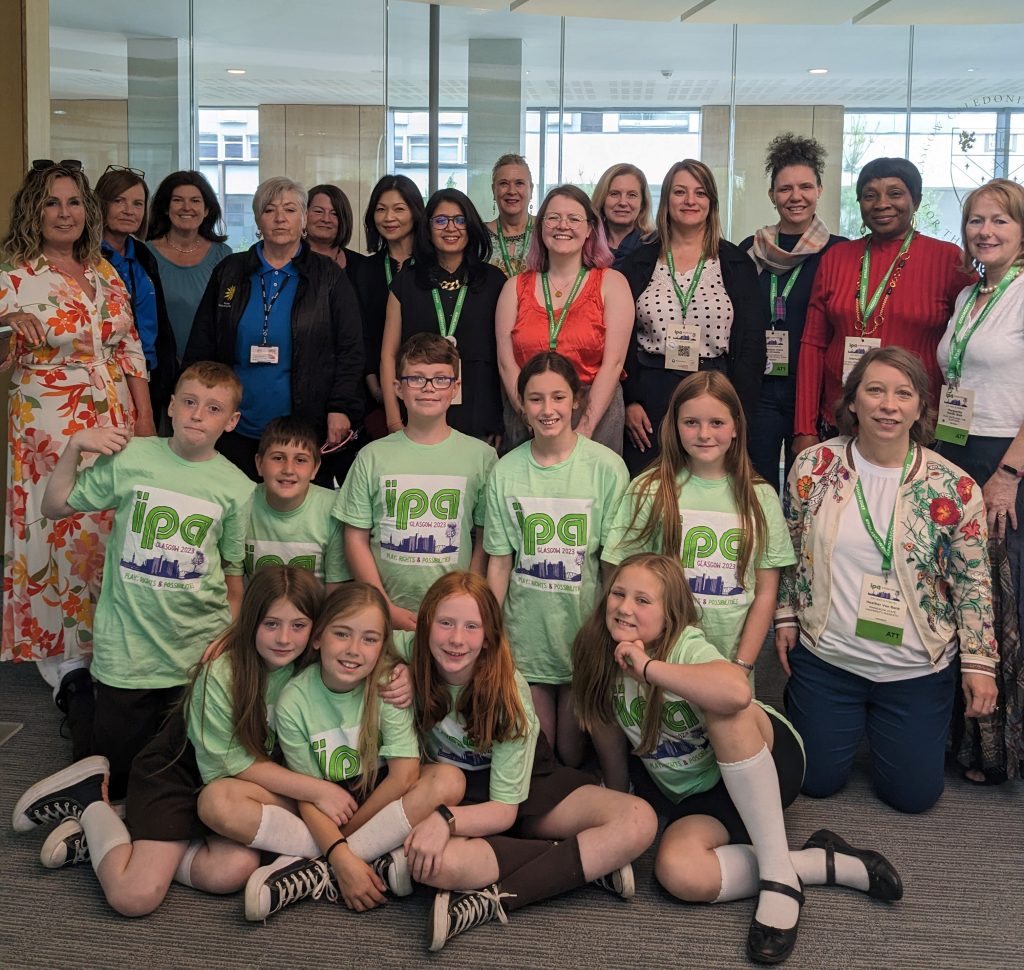
After that, I headed to the Hop Up session. The tagline “Let your imagination run wild and build the playground of your dreams!”. It sounded very exciting and it did not disappoint. It was really interesting to learn about their project of developing indoor loose parts and then to actually play with the parts was a treat. We built a hamster wheel, a den, a robot costume, and of course, a spaceship!
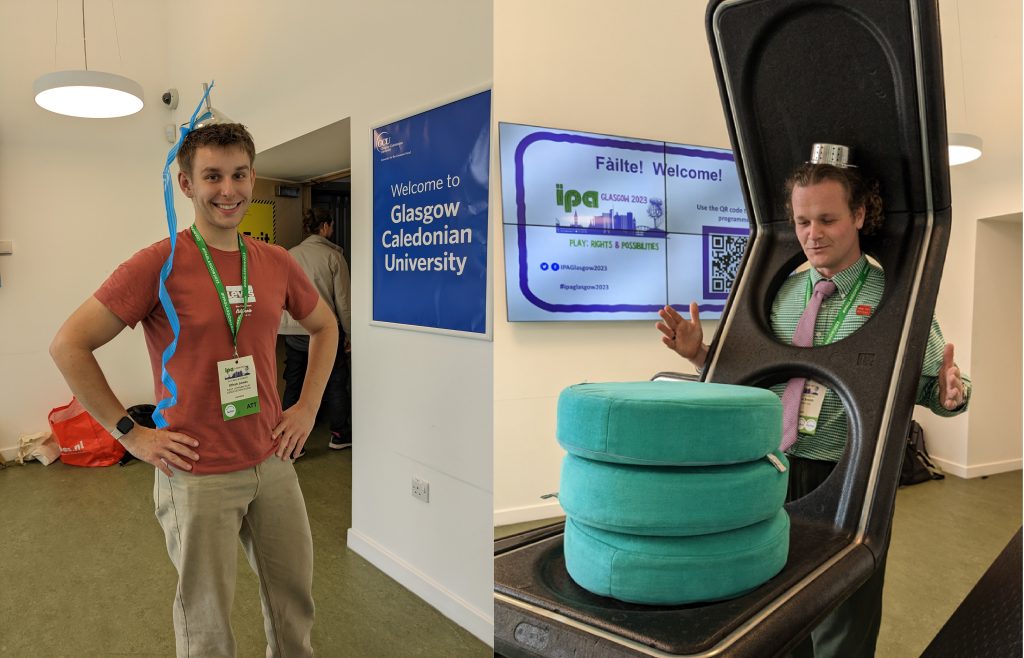
Then I headed outside as it was a beautiful day, and PEEK had set up a Play challenge in the garden. I played noughts and crosses with loose parts, built a den, and made the play pledge to play more in my own life.
A full-on day of conferencing wasn’t enough though – so I headed to dinner with colleagues and then onto the ceilidh where I danced the night away!
Wednesday
Designing and Evaluating Playgrounds
I attended Is There A Place For Guidelines When Designing Public Playgrounds for Inclusion? By Bryan Boyle, Alice Moore, and Helen Lynch. This presentation summarised and evaluated what guidelines currently exist internationally on how to design inclusive play spaces. It was interesting to hear that most of these guidelines live in “grey literature” which means they are not academically peer-reviewed.
Another finding was that there is inconsistency globally between these guidelines in terms of what universal design is and how you actually do it. During the question time, there was an interesting discussion about the design of equipment vs. what actually happens in a space and the inclusive potential of loose parts vs. fixed equipment.
I was delighted by the proposed questions for the universal design of play spaces which were: Can I get there? Can I play there? Can I stay there?
I thought these were very simple and a good guide for designing inclusive play spaces.
Following this I heard from Dr Sruthi Atmakur-Javdekar who spoke about evaluating play spaces and consulting on future play spaces using a visual assessment chart. I really liked the proposed worksheet that used pictograms to represent the equipment. It is a really useful tool that allows young children to take part in the assessment of their spaces, as well as people who find reading difficult. We also heard an important discussion about ensuring children get their say on their play spaces through a very visual evaluation method.
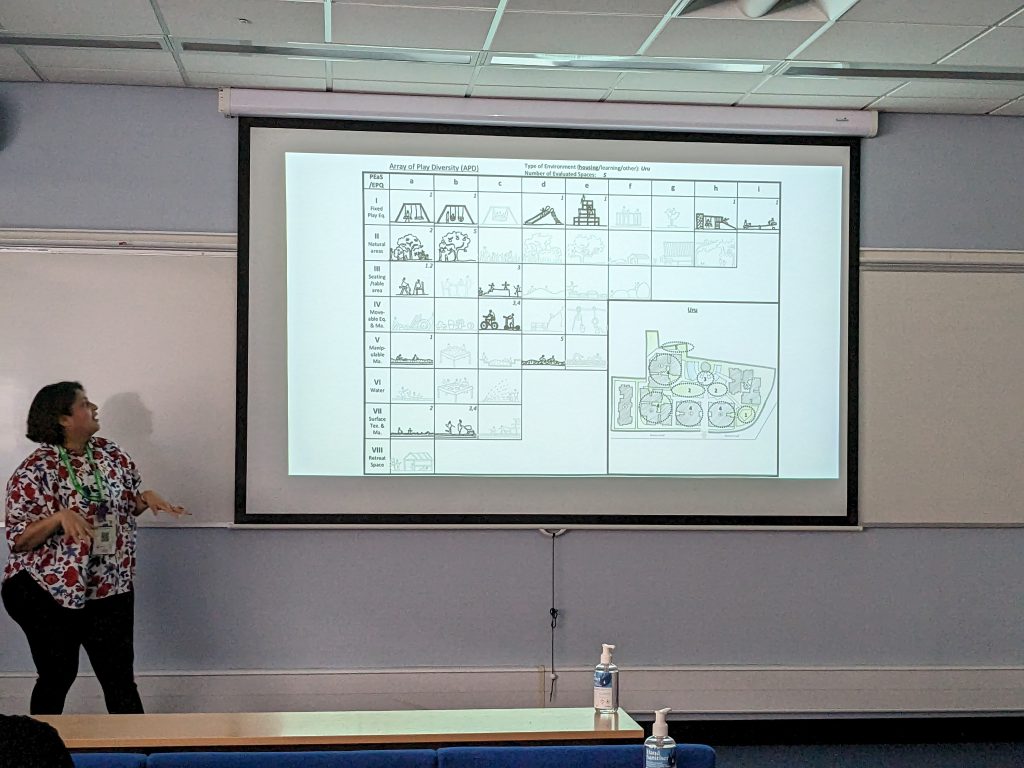
Later in the day I also heard presentations from Matluba Khan on Children’s play during the pandemic in urban Bangladesh and again from Sruthi Atmakur-Javdekar on How Do Middle-Class Families Manage Young Children’s Play? Both presentations gave interesting insights as to how the built environment and parental attitudes affect play.
Podcasting
After this, I met with Tam Baille and Phillip Jaffe to record a podcast for the conference website. Tam posed Phillip questions from children around the world – some highlights for me were “What is your favourite colour” and “Why are children important”. Keep an eye out for the podcast (coming soon!).
Next, I sat in on The Aileymillers session in the Lantern Room with the podcasting mics. It was wonderful to listen to this group of children acting as young reporters for the conference and asking their own questions to the conference attendees. The most intense discussions followed questions such as “pancakes or waffles” and “How will the climate crisis affect the right to play”. Listen out for this podcast episode as well!
Poster presentations
Following this I visited the poster presentations where I spoke to Natsuki Hotta. Her poster was of the project she did working in a playground attached to an evacuation centre following a large earthquake in Japan. It was harrowing to hear about the number of deaths and how the children were cramped in the shelter and how they were feeling. But the introduction of play really helped the children have some fun and recover after such a traumatic ordeal.
I really loved Natsuki’s business card which had a great quote about play: “Better a broken bone than a broken spirit”
I also spoke to Angela Day from Hackney Marsh Adventure Playground about her poster of the project Documenting and Archiving Play Spaces. We had an interesting chat about how we remember play spaces and capture those memories.
Intergenerational Play and Storytelling
My presentation was the last slot in the day so everyone was quite tired. But we got excited by sharing some tablet and doing the hokey pokey!
After the warm-up, I was delighted to share the learnings from the project Intergenerational Play & Storytelling which Play Scotland created in collaboration with Generations Working Together. Find out more about the project here: https://dev.playscotland.org/projects/archive-past-projects/intergenerational-play-storytelling/
My colleague Loreen Pardoe from GWT was the powerhouse behind the project, but unfortunately, she could not attend. So we took a wee selfie to send to Loreen to say hello!

As part of the presentation, to show the audience a little bit of what the project was about, I made sure we all sang a traditional Scottish song – Ye Cannae Shove yer grannie aff a bus which everyone enjoyed.
We then had an interesting discussion about ways to connect people through play.
Thursday
Thursday I took the day off from the conference to spend some quality time with my cat and play around on the hoop!
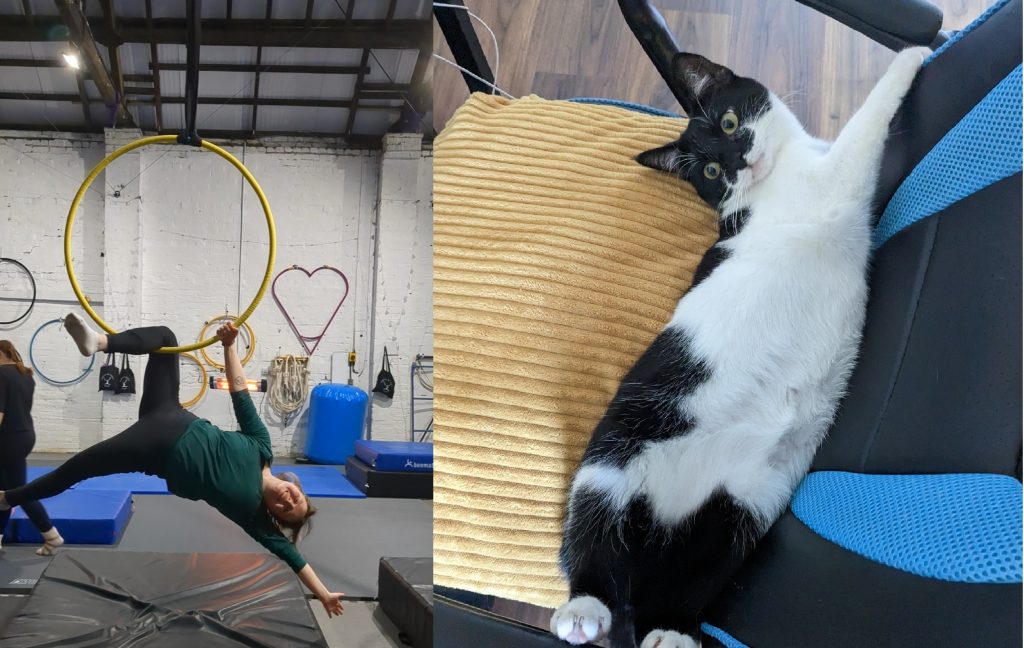
Friday
The last day of the conference is always bittersweet!
I spent the morning moving the Litter Pick and Play exhibition to its new home in Glasgow City Chambers.
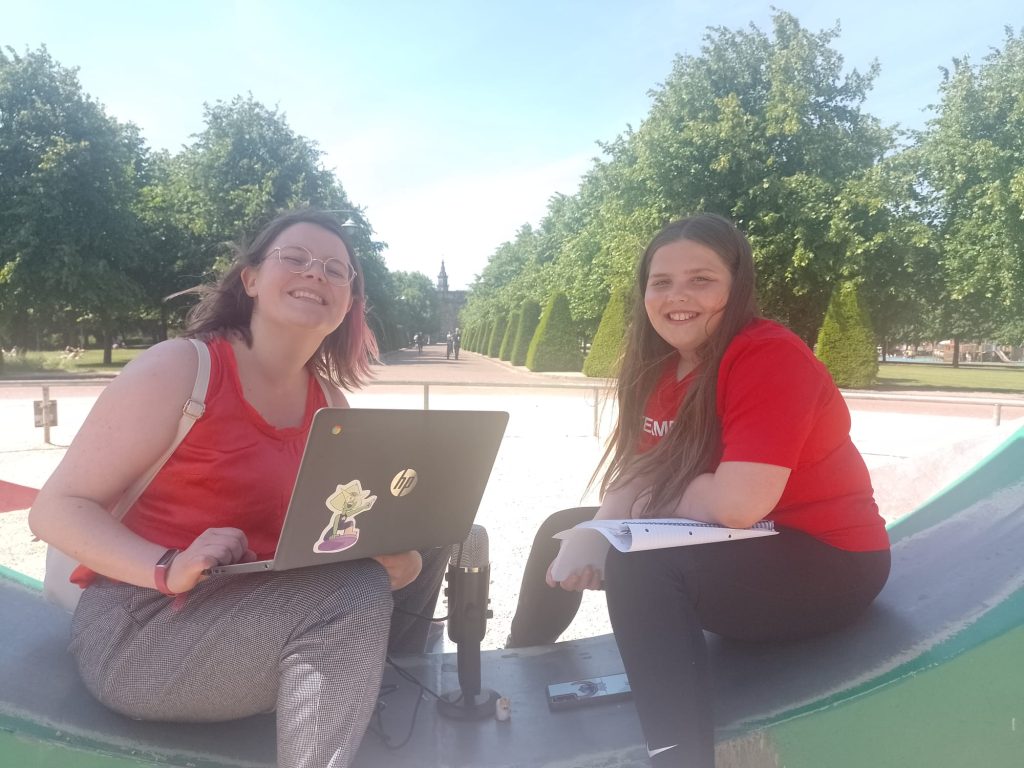
Then I went along to the Pop Up Play and recorded some interviews with the help of Bethanie from PEEK.
Then we treated ourselves to blue slushies and a play on Ring World to celebrate a conference well done!
